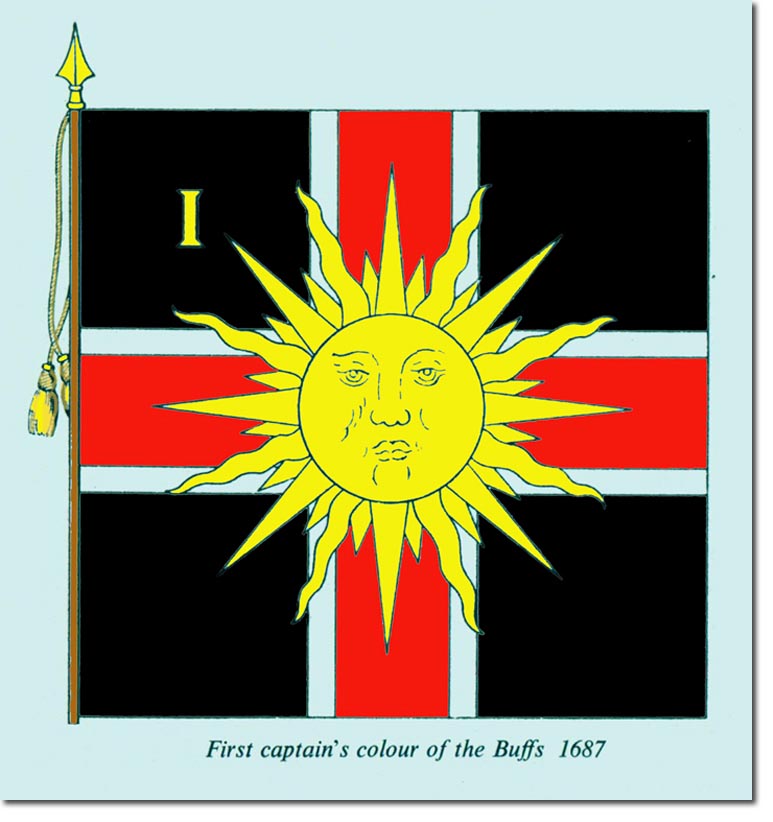|
|


|
|
The Colours carried by ensigns of infantry regiments since the English Civil War signified each company. The captains of these companies were numbered except for the first three companies known as the Colonel's, Lieutenant-Colonel's and the Major's Company. The Colonel's Company Colour was usually plain but a distinctive device was used for the others. The Colonel chose the basic colour of these flags and the device was usually his personal or family armorial emblem. In 1685 King James II ordered the inclusion of the cross of St George to the Colours of his regiments and the Holland Regiment is recorded as having this Colour for the first captain's company, with a Roman numeral 'I' in the upper corner. The Colonel's was all black with the 'sun in splendour'. The Lieutenant-Colonel had a similar Colour to the one illustrated but without the I in the corner. The Major's company had similar again but with a silver pile wavy or 'blaze' issuing out of the upper corner. The other captains had II, III, IV etc.
S M Milne, in his long article on Colours remarks that this design is a 'strange departure' from the Colours before or since. He says 'Brooks describes them in his day very simply "the red cross bordered white on a green field" It will be necessary to look further afield for a probable explanation of this device so novel and conspicuous. The colonelcy had recently been given to Oglethorpe, who had been knighted for his services at Sedgemoor, but the sun in splendour formed no part of the armorial bearings of his family. 'No device, heraldic or otherwise, was placed on any standard in the time of James II without some good reason; then why this important badge on the new Colours of the Holland Regiment, given out to the corps about the period when the cavalry leader of Sedgemoor was appointed to the colonelcy?' Milne goes on to consider that the sun in splendour may have had a connection to James II. Sandford's history of the 1685 Coronation has a full page illustration of the fireworks which apparently illuminated the royal cyphers under the crown with the sun in splendour above the crown. He also suggests that the Sun King, Louis XIV, conferred the honour on the regiment out of gratitude for services rendered to the last of the Stuart kings by his royal cousin of France. However, the symbol did not last as the next Colour to come to light, dated 1693, does not have it. |
Armed Forces | Art and Culture | Articles | Biographies | Colonies | Discussion | Glossary | Home | Library | Links | Map Room | Sources and Media | Science and Technology | Search | Student Zone | Timelines | TV & Film | Wargames